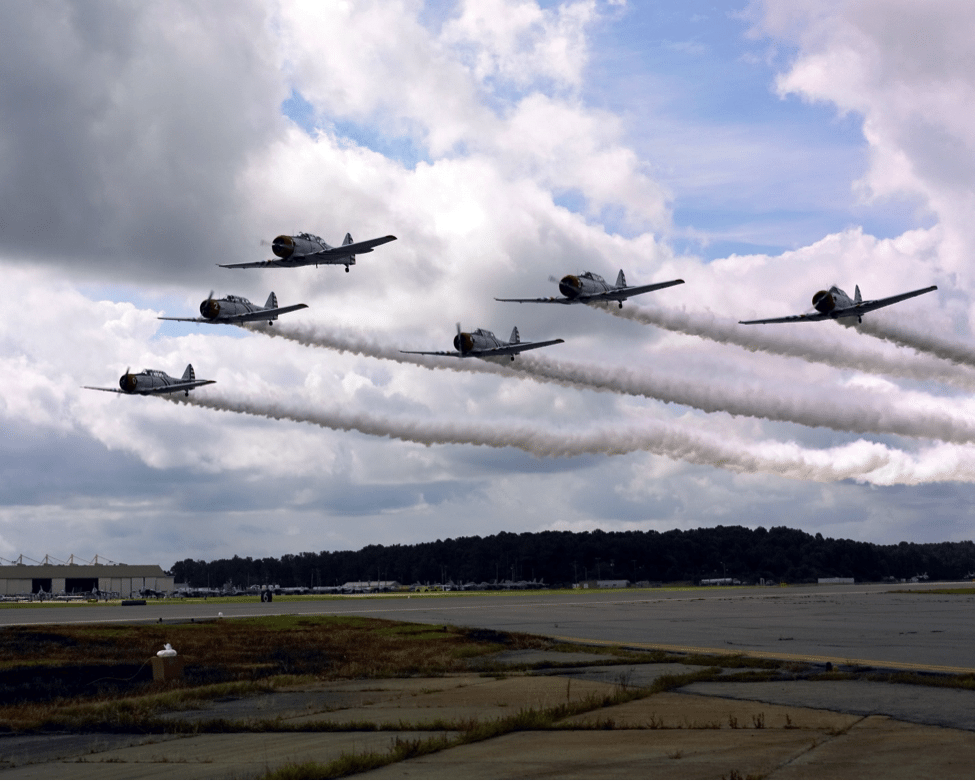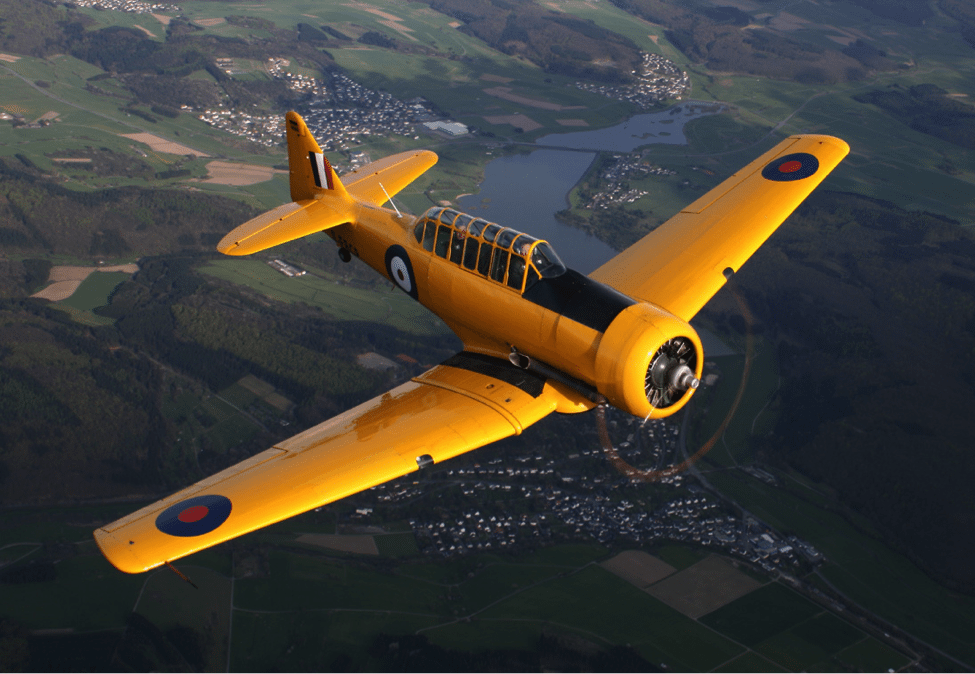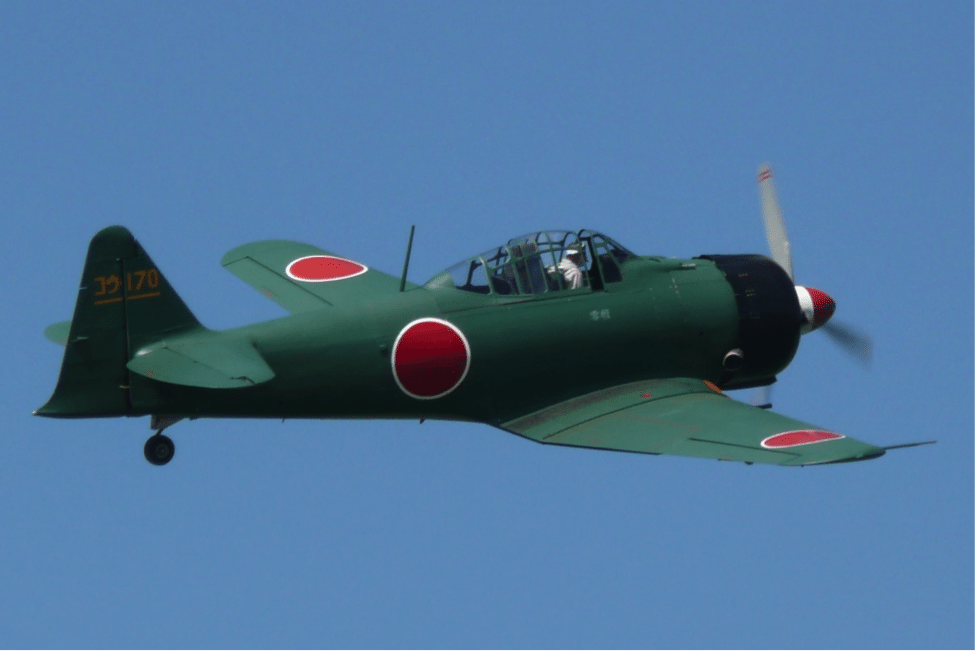The Trainer That Went to War
Texans have seen plenty of combat through the years. Although not flown in combat during World War II (they were too busy training combat pilots to be), Texans fought during the 1948 Arab-Israeli War, the 1946-1949 Greek Civil War, the Korean War, the Mau Mau Uprising in Kenya, the Algerian War, the Portuguese Colonial War, the Revolucion Libertadora in Argentina, the Ifni War in Africa, the 1971 Indo-Pakistani War, and the Vietnamese War.

A True World Aircraft
Past operators of the Texan / Harvard include Argentina, Austria, Belgium, Biafra, Bolivia, Brazil, Cambodia, Canada, Republic of China (Taiwan), Chile, Colombia, Republic of the Congo, Cuba, Denmark, Dominican Republic, El Salvador, France, Gabon, Germany, Greece, Haiti, Hong Kong, Honduras, India, Indonesia, Iran, Israel, Italy, Japan, Katanga, Lebanon, South Korea, Laos, Mexico, Morocco, Netherlands, Mozambique, New Zealand, Norway, Nicaragua, Pakistan, Paraguay, Philippines, Portugal, South Africa, Southern Rhodesia, South Vietnam, Saudi Arabia, Spain, Soviet Union, Sweden, Switzerland, Syria, Thailand, Tunisia, Turkey, United Kingdom, United States (Air Force, Navy, Marine Corps, Coast Guard), Uruguay, Venezuela, Yugoslavia, and Zaire. South Africa holds the record for T-6 time in service- from 1940 to 1995. That’s right. 55 years.

Texans Today
Today T-6s are frequent participants at air shows. With so many of them flying in civilian hands it’s not surprising that Texans routinely outnumber every other warbird at many of the well-attended events like the Experimental Aircraft Association (EAA) AirVenture every summer in Oshkosh Wisconsin. Texans have also been used as pylon racers at air racing events since 1968. The GEICO SkyTypers use T-6s for their eye-popping sky-filling aerial graphics simply because there isn’t a better aircraft that meets their somewhat unique requirements; the Texan is easy to fly in formation and it can carry all the smoke oil they need. The AeroShell Aerobatic Team also flies T-6s.

Keeping ‘Em Flying
Thanks to organizations like the Commemorative Air Force, the EAA’s Warbirds of America, the North American Trainer Association, and the T-6 Racing Association, pilots who are bitten by the T-6 bug or just want to get into flying warbirds have support and training options the likes of which few other potential warbird owners have. There are networks of Texan owners and familiarity flights available to just about anyone who can climb into the cockpit. Parts for T-6s are both plentiful and less expensive than those for other warbirds, again in large part because so many T-6s were built to begin with.

Playing Enemies on the Silver Screen
T-6s have starred many times in movies and television since the 1940s but their roles have been primarily as stand-ins. Movies like A Yank in the RAF (1941), Patton (1970), Kelly’s Heroes (1970), Midway (1976), A Bridge Too Far (1977), Operation Pacific (1951), The Flying Leathernecks (1951), PT-109 (1963), Where Eagles Dare (1968), and several others have featured T-6s playing the roles of both American and foreign fighter and attack aircraft. One exception is the movie Red Tails (2012), in which Texans were used in the role of…Texans.

Tora Tora Tora! and Texans
Perhaps the best known stand-ins are the cosmetically-altered T-6s modified to look like Japanese Zeroes specifically for and used in the live flying scenes in the 1970 movie Tora! Tora! Tora! The movie The Final Countdown (1980) featured a showdown between two of the Tora! near-Zeroes and two VF-84 Jolly Rogers F-14A Tomcats– with predictable results. The Japanese fighters seen weekly in the 1970s television series Baa Baa Black Sheep were also Tora! aircraft. Several of these ersatz Zero fighters, along with some of the other fake Vals and Kates also modified for the movie, are still flying today and often play the part of the Zero in aerial combat re-enactments at airshows. Sharp eyed Avgeeks can tell the differences between the real Zeroes and the fakes. Can you?

Honored By a New Generation of Pilot Trainees
It is no coincidence that the Beechcraft T-6A, the current primary training aircraft used by the United States Air Force and the United States Navy, along with eight other countries and counting, is named the T-6A Texan II.
[youtube id=”xDSz39209xE” width=”800″ height=”454″ position=”left”]
